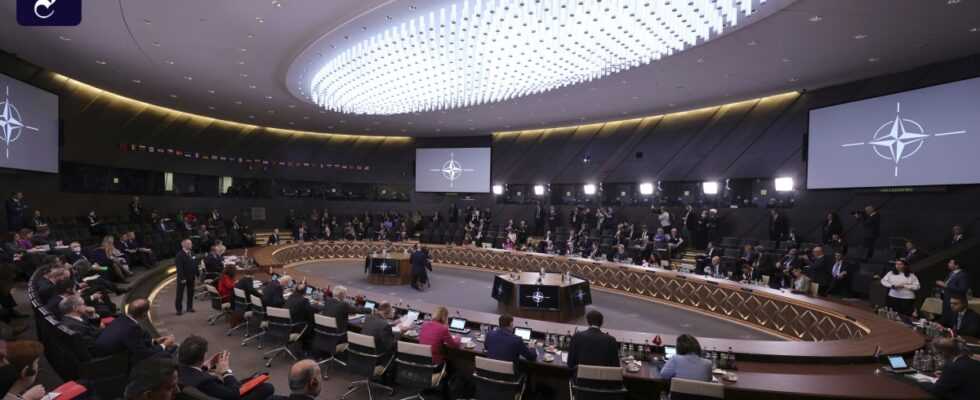DThis time the Ukrainian foreign minister was not only connected from Kyiv. Dmytro Kuleba appeared in person at NATO headquarters in Brussels on Thursday morning and he got straight to the point. His agenda is very simple, he said: “It only says three things, namely weapons, weapons and weapons.” It was no different for the foreign ministers of the alliance, which Kuleba came to meet. The question of how Ukraine can and must be helped now was at the center of the deliberations. “I have urged allies to continue to provide support in the form of many different weapon systems,” Secretary General Jens Stoltenberg said. It’s about “light and heavy weapons”.
That alone marks a turning point. You only have to think back to the meeting of the heads of state and government two weeks ago in the same place. “There is a red line, which is not to become a party to the war,” French President Emmanuel Macron said at the time. NATO has therefore decided to continue to deliver “defensive weapons” to Ukraine, but nobody thinks of sending tanks and fighter planes. Even Boris Johnson ruled that out, although the British Prime Minister merely referred to “logistical difficulties”.
concerns in the government
And now? The Czech Republic was the first NATO country to deliver several T-72 main battle tanks and armored personnel carriers, both Soviet models, to Ukraine. The partners were not surprised, according to reports, Prague had informed them beforehand. Other countries would soon follow, it was heard in Brussels, the states in the east still have some stocks from their time in the Warsaw Pact in stock. Apparently there was an agreement before the meeting. Chancellor Olaf Scholz revealed this when he defended his defense minister against criticism in the Bundestag on Wednesday that she was too hesitant. According to Scholz, Christine Lambrecht is doing everything “that is feasible in view of the decisions taken by the Allies and in view of the capabilities of the Bundeswehr”. There can be no talk of an official decision – NATO as an alliance also wants to stay away from arms deliveries. However, this does not stand in the way of informal agreements between the member states.
Unlike before, the federal government did not categorically reject a request from Ukraine to supply 100 Marder infantry fighting vehicles. “We’re not saying no, we’re looking at what solutions there are,” Foreign Minister Annalena Baerbock said on Tuesday. There are still concerns in the federal government that “German tanks” could draw the country into a direct confrontation with Russia. And there are also a lot of technical questions “from logistics, training and spare parts”, as Baerbock said. But the government wants to shake off the image that it’s always on the brakes. The new attitude towards Kyiv is therefore: Tell us exactly what you want, we’ll do what we can, and then you have to decide for yourself whether it makes sense for you.
Daily at 12.00 p.m
SIGN IN
Stoltenberg’s statements on Thursday morning showed just how much the wind has changed in the alliance. In two sentences, the Secretary-General wiped out the previous distinction between defensive and offensive weapons, which had been a sacred cow for many allies two weeks earlier. Ukraine needs light and heavy weapons for defense, he said, “and that is actually defensive self-defense with, of course, advanced weapon systems.” In plain language: tanks, artillery and ballistic missiles, which can be used to sink Russian warships, are now also considered defensive systems.
